Mark Sisson's Blog, page 182
May 22, 2017
Dear Mark: Roundup Safety and Polyamory to Monogamy
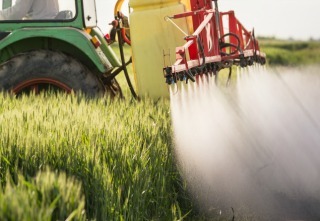 For today’s edition of Dear Mark, I’m covering two entirely different topics. The first is a fairly familiar topic to readers of this blog—whether a popular pesticide is actually dangerous or not. The reader asking the question thinks the data is clear, and Roundup is safe, but I’m not so sure. Second, I discuss the evolutionary underpinnings of our transition from polyamory to monogamy.
For today’s edition of Dear Mark, I’m covering two entirely different topics. The first is a fairly familiar topic to readers of this blog—whether a popular pesticide is actually dangerous or not. The reader asking the question thinks the data is clear, and Roundup is safe, but I’m not so sure. Second, I discuss the evolutionary underpinnings of our transition from polyamory to monogamy.
Let’s go:
Moreover, the research they reference has been reviewed to death by every regulatory agency on the planet, and none of them are convinced that glyphosate is dangerous, unless anyone here plans on drinking it.
Humans simply aren’t exposed to enough of the pesticide to experience any negative health effects. See the most recent EPA report on the subject: http://src.bna.com/iE2
Thanks for the pushback. I hear what you’re saying—folks on either side of the issue can really misrepresent the facts. There’s nothing I hate worse than unfounded fear-mongering. And even when the fears aren’t totally unfounded, the amount of worry and stress the mongering provokes can be worse than the thing you’re supposed to be fearing.
But with glyphosate, or more accurately Roundup, I just don’t agree with your assessment.
Pesticides aren’t just single chemicals. They’re actually collections of various chemicals called formulations, which contain the declared active principle (glyphosate) and some adjuvants. The adjuvants are supposed to be inert, but they’re not. Just like the supposedly inactive ingredients in toothpaste can have some physiologically significant effects, the adjuvants in pesticide formulations can alter the effect of the active principles.
If adjuvants were truly inert—if they did nothing—they wouldn’t be included. Everything costs money and everything adds up, especially when you manufacture at scale. So these “inert” adjuvants must be fulfilling an important role. Some are surfactants that allow the pesticide to penetrate the cellular walls of organisms. Others are thickeners or emulsifiers to improve the distribution and resiliency of the pesticide (nothing like a smooth, velvety Roundup reduction) in the face of rain, runoff, or extreme heat. Adjuvants increase dermal absorption, too. In other words, they make pesticides more effective, more resilient, and more damaging to pests. And according to a recent paper, many adjuvants also amplify the toxic effects of pesticides on human health.
Using isolated human cells, the researchers compared the effects of nine popular pesticide formulations with those of their isolated principle ingredients on mitochondrial activity and membrane degradation. In 8 out of 9 instances, the commercial formulations were on average hundreds of times more toxic than the principle alone. Roundup and glyphosate were both tested; the former was 125 times more toxic than the latter.
If the EPA used studies of the commercial formulations in their safety assessments, I’d be more likely to accept them. But they don’t. Most of the safety tests study the active principle, not the full pesticide formulation we’re actually encountering in our food and our environment.
In a 2000 review of the human and animal toxicology evidence that concluded Roundup posed no risk to human health, there were some glaring issues. Out of the dozens of studies they reviewed, the only one that actually used fully-formed commercial Roundup was on dermal absorption. All of the other ones tested glyphosate or one of the “inert” components of Roundup in isolation—never together. That’s not how this works. That’s not how biology works.
This isn’t a new problem, either. Some researchers have criticized allowing largely untested adjuvants into the food system via regulatory backdoors as far back as 2006.
It seems like common sense. If you’re going to talk about the toxicity of Roundup, you have to test the toxicity of Roundup. Right?
Here’s what happens when you do test the commercial formulation against the primary chemical:
Roundup kills rats more quickly and frequently than glyphosate alone.
Roundup kills piglets. Glyphosate does not.
Doesn’t fill me with confidence.
One aspect of ancestral health that I have not seen you address is Sexuality. I am surprised, as I think we can all agree that it is a very important part of our health and well being. I just finished reading the book by Dr Christohper Ryan, “Sex At Dawn” (he also has a TED talk), and I was blown away by the general premise of the book. The book argues, with compelling anthropological evidence, that humans are naturally promiscuous, and that prior to agriculture, human tribes/groups were very egalitarian. According to Dr Ryan, marriage and monogamy are as recent as our agricultural diets. I would love to hear your thoughts on this, and I think that the Primal Lifestyle is missing a cog in the wheel without addressing this important aspect of human health.
I’m a big fan of Christopher Ryan’s podcast, Tangentially Speaking (which I discuss in this post), but oddly enough haven’t read his book yet. I think I’ll do that before I comment on his argument.
However, I can discuss the shift away from polyamory toward monogamy. Why’d it happen?
As is the case with other novel environmental inputs like dairy, there is some degree of genetic adaptation to monogamy. If the society is set up for monogamy, “monogamy genes” will be selected for. That may be what happened in the largely monogamous agricultural societies of Europe and Asia, where land ownership and successful transfer of assets to one’s offspring were the foundation of reproductive success. The more wives you have, the more offspring you’ll have, the more diffuse the inheritance you bequeath. A farm, 300 cattle, and a dairy divided 12 ways isn’t nearly as helpful to your reproductive legacy as a farm, 300 cattle, and a dairy divided two ways.
A recent paper suggests that socially-imposed monogamy arose due to changing disease dynamics. In the smaller group sizes of paleolithic hunter-gatherers, the sexually-transmitted infection burden remained low enough to allow polygamy. As populations settled down and grew, the STI burden increased, making polygamy incredibly dangerous. This was compounded by the shift away from nomadism. If you’re on the move, you’re less likely to get bogged down with disease. Our ancestors in their smaller groups were largely nomadic and thus inoculated from the STI risks of a settled population.
Polyamory isn’t my thing. Whatever your thing is, though, it’s got to come down to basic human decency. Be true to who you are and what you want. Don’t hurt others. Be honest. Be safe.
What more can one say?
That’s it for today, folks. Thanks for reading. I’d love to get your feedback on today’s questions and answers.
I’m especially interested in your experiences or insights into the polyamory/monogamy matter. That could make for an interesting future post.
Be well.
The post Dear Mark: Roundup Safety and Polyamory to Monogamy appeared first on Mark's Daily Apple.



May 21, 2017
Weekend Link Love – Edition 453
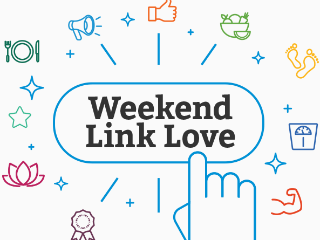 RESEARCH OF THE WEEK
RESEARCH OF THE WEEKBright light in the morning leads to better sleep at night.
Using growls, “dogs may communicate honestly their size and inner state in a serious contest situation, while manipulatively in more uncertain defensive and playful contexts.”
UVA exposure and vitamin D3 levels, not sunburns or UVB, seem to mediate the risk of melanoma.
Genes that predict schizophrenia and bipolar disorder also predict creativity.
NEW PRIMAL BLUEPRINT PODCASTS
Episode 169: Adam and Vanessa Lambert: Host Elle Russ chats with Bee the Wellness founders Adam and Vanessa, who use diet, fitness, and life coaching to expand their clients’ realities.
INTERESTING BLOG POSTS
Letter to the editor of the recent “gluten-free diets will kill you” paper.
Humans actually have a great sense of smell.
MEDIA, SEHMEDIA
Apple CEO Tim Cook has been wearing a continuous glucose monitor.
EVERYTHING ELSE
The Apple Watch does a decent job at detecting heart irregularities.
This hedge fund’s only employee benefit is cryopreservation.
The insects are disappearing, and no one quite knows why.
That weird star is dimming again.
Not your Grandma’s home remedy for migraines.
THINGS I’M UP TO AND INTERESTED IN
Podcast I just appeared on: The Open Sky Fitness Podcast.
Discussion everyone should hear (or read): The one about who really influences a study’s results and release.
Question I’m pondering: Why’d this patient have brain activity for nearly 10 minutes after dying?
Cafe I’d visit: The one where you’re surrounded by friendly rats.
Podcast I enjoyed: Tim Ferriss interviews Art De Vany.
RECIPE CORNER
Got a pan, some pig, and asparagus? Make spicy pork asparagus stir-fry.
I prefer clams (I’m a New England native, after all), but this savory paleo chicken chowder is quite good.
TIME CAPSULE
One year ago (May 21– May 27)
Humility: A Primal Virtue with Modern Value – The case for being a little humble.
8 Essential Tips for Primal Men – How to man up.
COMMENT OF THE WEEK
“Ok time for me to learn knitting to make my compubody sock”
– If you can wait a few months, wildgrok, I’ll release a gluten-free PB-branded version.

The post Weekend Link Love – Edition 453 appeared first on Mark's Daily Apple.



May 20, 2017
Lomo Saltado
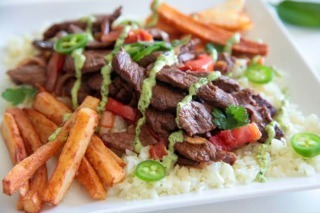 Lomo Saltado turns an Asian stir-fry into a uniquely Peruvian meal. The recipe starts out in familiar stir-fry territory: thinly sliced steak cook with red onion, soy sauce and vinegar. But then tomatoes are added. And French fries. A fiery green sauce made from PRIMAL KITCHEN® Mayo,
Lomo Saltado turns an Asian stir-fry into a uniquely Peruvian meal. The recipe starts out in familiar stir-fry territory: thinly sliced steak cook with red onion, soy sauce and vinegar. But then tomatoes are added. And French fries. A fiery green sauce made from PRIMAL KITCHEN® Mayo,
jalapenos, cilantro, and lime finishes the dish, officially turning Lomo Saltado into a stir-fry like no other.
Lomo Saltado isn’t Lomo Saltado without the French fries. There’s just no way around it. For this recipe, the potatoes are fried in tallow, cooled, and then reheated before serving for the sake of the resistant starch. If you’re going to eat French fries, the ones here are probably your best bet. Eat them occasionally, in moderation, and enjoy every crispy, salty bite.
If you don’t want to splurge on French fries (or maybe you do, but you just don’t want to deal with frying them) then you can skip the fries and still enjoy this meal. It won’t be Lomo Saltado, but it will be a delicious stir-fry with a creamy, spicy sauce you’re gonna love.
Servings: 4
Time in the Kitchen: 1.5 hours, plus 3 hours to soak potatoes in water before frying
Ingredients

3 russet potatoes, peeled and cut into ½-inch/13 mm thick French fries*
Beef tallow, for frying
1 head cauliflower, made into cauliflower rice
3 tablespoon avocado oil, extra virgin olive oil or coconut oil (45 ml)
1 to 1 ½ pounds sirloin steak, cut into thin slices and seasoned with salt (450 to 680 g)
1 red onion, cut into medium slices
2 cloves garlic, finely chopped
2 plum tomatoes, cut into wedges
1 hot pepper, (jalapeno or other type) sliced
2 tablespoons tamari, soy sauce or coconut aminos (30 ml)
2 tablespoons red wine vinegar (30 ml)
Cilantro Mayo
1 to 2 jalapenos, chopped
1 cup loosely packed cilantro leaves (some small stems are okay too) (240 ml)
1 clove garlic, finely chopped
1 teaspoon lime juice, plus more to taste (5 ml)
½ cup PRIMAL KITCHEN® Mayo (100 g)
Instructions

Lomo Saltado has several different parts that come together into one dish.
This is the game plan:
1. Cut potatoes and soak in water at least 3 hours, or overnight
2. Fry French fries
2. Make cauliflower rice
3. Make Cilantro Mayo
4. Stir fry the beef, onions, and tomatoes
5. Combine everything!
*To cut French fries, slice the potato lengthwise into 4 or 5 pieces. Lay the pieces flat and cut into sticks.
Put the raw French fries in a bowl and cover with water. Store in the refrigerator for at least 3 hours or overnight (soaking the potatoes in water helps make crispier French fries). Drain the fries. Blot dry with a dish towel or paper towel (wet fries put into hot oil will splatter a lot)
Slowly heat tallow in a heavy, deep pot. You should end up with at least 2 inches of melted tallow. When the temperature of the tallow reaches 300º F, add the French fries. Don’t overcrowd the pot; keep fries in a single layer while frying. Cook until the fries are soft and easily pierced with a knife, about 5 minutes (the fries will not be very brown at this point) Remove the fries with tongs or a slotted spoon and set on paper towels to blot excess fat.
Heat tallow up to around 400º F. This final time in the fryer is to brown the fries.
When the fries are golden and crispy around the edges, remove from the tallow. Sprinkle with salt. Set aside.
Make the cauliflower rice. Set aside.
Make the cilantro mayo. Combine jalapenos, cilantro, garlic, and lime juice in a food processor. Scrape down sides and process until ingredients are finely chopped. Add PRIMAL KITCHEN® Mayo, and blend until all ingredients are smoothly combined. Set aside.
Preheat oven to 350º F. Spread the fries out on a sheet pan and reheat in the oven while you make the stir-fry.
Heat a wok or wide cast iron skillet over high heat. Add 2 tablespoons oil. When the oil is hot, add the meat in small batches, cooking each batch 2 to 3 minutes before removing from the pan. Set meat aside.
Add remaining tablespoon of oil. Add onion. Cook 1 to 2 minutes.
Add garlic, tomato and hot pepper. Cook 1 minute.
Add meat back to the skillet.
Add soy sauce and vinegar. Cook 1 to 2 minutes until most of the liquid is gone.
Serve over cauliflower rice with French fries on the side. Drizzle cilantro mayo over the top.

The post Lomo Saltado appeared first on Mark's Daily Apple.



May 19, 2017
Success Story Follow-Up: My Primal Journey Has Been a Steadying Force in a Tumultuous Time of Life
It’s Friday, everyone! And that means another Primal Blueprint Real Life Story from a Mark’s Daily Apple reader. If you have your own success story and would like to share it with me and the Mark’s Daily Apple community please contact me here. I’ll continue to publish these each Friday as long as they keep coming in. Thank you for reading!

I first wrote to Mark in September of 2015 after transitioning to a primal lifestyle in 2014. As a quick review I was coming off six or seven years of living in a post college frat house devouring IPAs, nachos, and pizza; spending late nights at bars, and running four or five miles four or five times a week in the name of staying healthy. I look back on my twenties with fondness and nostalgia, but I have no desire to go back to those dive bars that I used to frequent with such ferocious regularity.
When I last wrote I had a 4-month-old son who was born a month early and only screamed during times when he was not sleeping (so that was awesome), was beginning graduate school, was a week into a new administrative job, and was transitioning to a suburban lifestyle. Stressful times! Now I find myself with a thriving but demanding two-year-old son, a two-month-old daughter who only screams about a quarter as much as our son did (still awesome), three months from finishing graduate school, and about to successfully finish the second year at my new job. Still stressful times!
During the hardest moments of the past couple of years, I have again and again found myself grateful for the primal lifestyle and way of eating. I have taken a great deal of comfort from knowing that I am nourishing myself and giving myself the best chance to be more patient, loving, and fun for my family and everyone in my community.
I have had some revelations in terms of food and movement since I last wrote, and I’ll get into those in a moment. However, as I examine my life I am more and more aware of the acute importance of self-care and the incredibly powerful ways that living primally allows for that. I am not proud to admit this, but being a dad was (and, at times, still is) really difficult for me. There are some moments that feel really dark, trying, and interminable. Amidst a storming sea of violent diaper explosions, tantrums about which shoe my son should put on first, and orange slices being thrown all over the dining room, the primal lifestyle has been my anchor.
On the good days I feel like I don’t need a trip to a spa, a slow, romantic dinner at a restaurant, or even half an hour alone to recharge my battery. I don’t desire those things because the food I am putting into my body and the choices I’m making around sleep and wellness feel like a luxury in and of themselves.
I don’t want to paint too rosy a picture, and I almost made myself cry writing that sentence about a slow, romantic dinner. However, I am also consistently reminded that, as Mark says, my wife and I are investing in our family and ourselves with the nutritional and lifestyle choices we are making on a daily basis. During the moments when I can project past getting thrown up on or hearing the first dreaded thump in the crib at 5:45 a.m., I am at peace knowing that our priorities and choices are exactly where I want them to be. The primal life is a bit of a compass with which I can navigate the confusing map of parenting young ones while trying to maintain some contact with my wife and myself as well.
 In terms of nutrition and body composition, I have found a way to eat a bit less than I was before. First of all, I am using a compressed eating window by skipping breakfast every day, and I am thriving with this change. Though not starving, I am genuinely hungry by lunchtime, and I enjoy a giant salad with sauerkraut, a fried egg, a small piece of protein, and any veggies I can get my hands on bathed in some homemade dressing. Mercifully, my work has a salad bar and I can get healthful food (thanks to a chef who let’s us know what is Whole30 compliant) even in the middle of a busy workday. Dinner is some form of a few veggies and a good piece of protein.
In terms of nutrition and body composition, I have found a way to eat a bit less than I was before. First of all, I am using a compressed eating window by skipping breakfast every day, and I am thriving with this change. Though not starving, I am genuinely hungry by lunchtime, and I enjoy a giant salad with sauerkraut, a fried egg, a small piece of protein, and any veggies I can get my hands on bathed in some homemade dressing. Mercifully, my work has a salad bar and I can get healthful food (thanks to a chef who let’s us know what is Whole30 compliant) even in the middle of a busy workday. Dinner is some form of a few veggies and a good piece of protein.
In terms of macros, I am really enjoying experimenting with the minimum effective dose of protein. At around 180 pounds and between 13 and 14 percent body fat, I am trying to nourish around 155-160 pounds of lean mass. Over the past couple of months I’ve been getting by on around 70-80 grams of protein a day. There’s a chance I could put on a few pounds of muscle if I ate some more, but I am sleeping well, my energy is good, and my mind is sharp. That seems like more than a fair trade for slightly stronger boobs. I’ve read mixed things about the conversion of excess protein to glucose, but ingesting less feels healthy and sustainable to me.
Fat is a mainstay as I stay in ketosis almost all of the time. After winning the Grok Pose contest two years ago, the family is making its way through $1,000 of Primal Kitchen Mayo one gallon at a time. When I’m hungry, I go grab a broccoli floret or twenty and get a heaping bowl of mayo to dip until I’m satisfied. It beats a bowl of ice cream any day. Okay, that might be a stretch, but no one ever hated himself for snacking on broccoli.
In terms of exercise, I am lifting quite heavy (for me) twice a week, sprinting once a week (possibly twice if I play basketball), doing a bunch of push-ups, pull-ups, air squats, planks, and belly flexes whenever the spirit moves me. One of my lifting sessions is pushing and pulling (failing around four or five reps once I am warm), and the next one is very heavy lifting with my legs along with some core work. I focus on my hamstrings every week to keep them healthy for sprinting and play. My performance in the weight room is slowly improving (like I said, maybe not as quickly as it might if I were to eat some more protein), and I’m not consistently sore or lethargic.
 On the lifestyle side of things, I have recently reconnected with meditation, and that has been incredibly powerful. Like I said, there are some moments where I am not sure that parenting tiny people is something I’ll be able to keep doing, and the meditation has allowed me to be better for my kids by highlighting that, just like everything, it is temporary. Similar to my relationship with food, I am realizing that I cannot compromise meditating and live the life that I want to live. It has been costing me forty-five minutes of sleep every morning and a little time in the evenings with my wife, but if I wasn’t meditating she wouldn’t want to hang out with me anyway…I don’t even want to hang out with me when I don’t meditate.
On the lifestyle side of things, I have recently reconnected with meditation, and that has been incredibly powerful. Like I said, there are some moments where I am not sure that parenting tiny people is something I’ll be able to keep doing, and the meditation has allowed me to be better for my kids by highlighting that, just like everything, it is temporary. Similar to my relationship with food, I am realizing that I cannot compromise meditating and live the life that I want to live. It has been costing me forty-five minutes of sleep every morning and a little time in the evenings with my wife, but if I wasn’t meditating she wouldn’t want to hang out with me anyway…I don’t even want to hang out with me when I don’t meditate.
In terms of struggles, my biggest one has been the unadulterated joy that I get from food. My favorite thing to do is experiment with cuts of meat from Wild Harmony Farm, and roast some veggies doused in homemade melted lard. My cooking is getting better and better, and I’ve created some truly wonderful meals. On the hard parenting days, it can be the only positive stimulation I get, and it is easy to overdo it when there are three pounds of juicy pulled pork shoulder braised in coconut milk and curry with some cauliflower rice on the counter just waiting to be devoured. I’ve been working hard to increase the positive feelings I get outside of food with meditation and connecting with friends more regularly, and that has reduced the need to have fifths seconds of whatever I am eating.
Reading over my last “success story,” I still have the feeling that the more good choices I make, the more good choices I will make. It’s amazing that this journey started with the goal of LGN, and has ended up being a really steadying force in a tumultuous time in my life – though I still wouldn’t mind LGN. I feel a sense of purpose and forward momentum associated with these choices, and it allows me to improve just a little bit. The lifestyle feeds on itself, and I love how empowered I feel to make knowledgeable, healthy decisions as I commence my life as a parent of two.
The post Success Story Follow-Up: My Primal Journey Has Been a Steadying Force in a Tumultuous Time of Life appeared first on Mark's Daily Apple.



May 18, 2017
How Your Oral Biome Influences Your Overall Health
 In response to my post on oral health a few weeks ago, one reader offered a comment about the oral biome, and it’s a worthy follow-up, I’d say.
In response to my post on oral health a few weeks ago, one reader offered a comment about the oral biome, and it’s a worthy follow-up, I’d say.
The human oral cavity is home to hundreds of microorganisms. Latest estimates place the number of bacterial species in your mouth at close to 700, with the odd fungus, protozoa and even virus thrown in for good measure. This oral microbiome isn’t a whole lot different than that of our gut, but where things get interesting is when we consider the diverse range of habitats within the mouth: teeth, tongue, cheeks, gums, tonsils. All provide different living conditions for those microorganisms that colonize them, but that diversity of habitats also encourages a diversity of species.
And it’s fair to say that human microbiological research as a whole began with the mouth. In 1683, Dutch businessman and self-taught scientist Antoni van Leeuwenhoek scraped off a bit of plaque from his teeth, slotted it under his home-made microscope, and was the first person ever to physically see his own bacteria. Suddenly, one’s body was no longer wholly one’s own.
Since then, the study of oral microbiology has waxed and waned, but in recent years the topic has been a hotbed of activity in the scientific sphere. While the health of your gut flora is important, it’s becoming increasingly apparent that so, too, is the health of your mouth flora.
What Is the Function of the Oral Microbiome?
By now, you’ve firmly wrapped your head around the importance of homeostasis. As hocus-pocus as it sounds, achieving equilibrium in the body is critical to maintaining robust health.
This Zen-like mantra applies whole-heartedly to the oral microbiome. In a healthy mouth, your microflora and their by-products play an essential role in the salivary immune system, bravely warding off pathogenic invasion down your throat and into your nether regions. These microscopic communities also aid in digestion, protect your teeth against acidic foods and substances, and process vitamins that are critical to our general health.
The little guys in your mouth can even play a role in odors. That glass of red smell a bit off? It could be that your oral community is haywire, rather than a crappy cork or a blast of sulfites.
And the party doesn’t end in your mouth. Research published a couple of years ago demonstrated that the small microbial population of the human lungs are populated, at least in large part, by the same microbiota occupying our mouth. It seems that the lungs, and presumably other parts of the body, “borrow” bacteria from the mouth to ensure they’re meeting their biological quota. Studies have even shown that the placental microbiome more closely resembles that of the mouth than any other part of the body. In this way, the mouth acts as a biodiversity reservoir for the rest of the body.
When Your Oral Environment Is “Off”
Back in 1929, an article published in the Journal of the American Dental Association entitled “Animal Parasites of the Mouth” first suggested that these might directly contribute to dental disease. Of those dental diseases, periodontal disease and gingivitis are the big players, and in fact contribute to the second most common human infection: dental cavities. (hint: the common cold is, not surprisingly, takes top billing).
Slowly, our understanding of the dynamics of oral disease is improving. After years of research, scientists can now use changes in the oral microbiome to predict the onset of dental cavities, months before those cavities become visible. Research has also shown that the development of oral microbiota is directly correlated to age, meaning the older one gets, the more diverse their oral microbiome should be. Those who develop cavities, however, invariably have a less mature (and hence less diverse) microbiome.
But that’s just the tip of the iceberg. Oral bacteria have now been implicated in a wide range of systemic diseases, including diabetes, rheumatoid arthritis, cardiovascular disease, colorectal cancer, and pancreatic cancer.
Take pancreatic cancer, for example. Research shows that those with significant counts of P. gingivalis and A. actinomycetemcomitans in the mouth have a higher risk of pancreatic cancer. A predominance of Fusobacteria and its genus Leptotrichia, on the other hand, is associated with a decreased risk of pancreatic cancer. It’s not coincidence.
And while the linkages between our oral microbiota and systemic disease may vary, there’s likely one thing they all have in common: our old nemesis—inflammation. Pathogenic species like P. gingivalis promote inflammation in the mouth, thereby contributing to oral disease, but they also exacerbate inflammation in the rest of the body.
Other typical pathogenic bad boys, like Streptococcus mutans and Candida albicans, produce much the same inflammatory effect. And considering that oral strains have been found in other far off parts of the body, it’s not overly surprising.
The Decline of the Modern Oral Microbiome
A study published in the Journal of Nature Genetics took an interesting look at our oral microbiome history over the millennia. Using calcified dental plaque on ancient teeth, they were able to produce a living oral record through the ages. The research showed that the two major shifts in oral microbiological biodiversity occurred first when we shifted from hunter-gathering to farming, and again when we started mass-producing flour and sugar during and after the Industrial Revolution.
It was at this point that our oral microbiomes became dominated by cariogenic bacteria, and it’s been a slippery slope ever since. As the research team concluded, “modern oral microbiotic ecosystems are markedly less diverse than historic populations, which might be contributing to chronic oral (and other) disease in postindustrial lifestyles.”
On a lighter note, dental archaeology has revealed some seriously interesting details not only about our own ancestors, but about our close cousins the Neanderthals. DNA extracted from the teeth of five Neanderthals in northern Spain suggests that they may have been pursuing the odd “intimate liaison” with our own human ancestors. How’d they figure that one out? By identifying the presence of a microbe that causes gum disease in modern humans. Not only does this tell us that these folks enjoyed inter-species partnering from time to time, but more to the point, it indicates that many of the microbes in our current oral microbiome were already present at least 50,000 years ago, albeit in a more diverse fashion.
Which brings us around to something else of interest. Inter-species kisses aside, scientists have now shown that an average of 80 million bacteria are swapped between kissers, with those of the French kissing inclination are probably swapping a whole lot more than that. I’ll leave that for your consideration.
It Comes Down to Balance
A traditional Western take on things is to create two mental bins: one for positive, and one for negative. Then, based on popular consensus, our minds thriftily compartmentalize the phenomena in our lives into one of the two bins. That thing is either good or bad – there’s no middle ground.
Primal thinking dictates a shift away from this black and white view of the world. We recognize that there’s rarely hard and fast “good and bad,” but more a sliding scale that becomes less desirable the further we move away from balance. When homeostasis is achieved, our health flourishes, while the opposite can be said for the outer fringes of that scale.
This, as it happens, is a great way to view the oral microbiome. Far from CW’s anti-microbial standpoint, I’ve already mentioned the diverse and critical roles that the microorganisms in our mouths play in our overall health. When the scale shifts, however, we see an overabundance of pathogenic bacteria, influential in both dental and systemic disease.
It’s that tilt of the scale that we want to avoid. And to avoid it, we need to understand just what’s going on in the microbial communities on our teeth, tongue, gums and cheeks.
Take plaque, for example. One study found that rather than just being composed of blobs of malicious organisms, plaque is actually a highly organized collection of both symbiotic and pathogenic bacteria and fungi that changes over time.
Layer upon layer of microorganisms attach themselves to the tooth, with each layer creating just the right conditions for the next species to move in and set up shop. It’s a very structured system of early colonizers, bacterial yeomen, and microbial aristocrats that are insulated by the vagaries of the mouth through their protective layers of insubordinates.
As with any ecological community, all the species have their place and (in the right amounts) ensure homeostasis is maintained within the mouth. It’s when the pathogenic species, like P. gingivalis, S. mutans and C. albicans, gain the upper hand that things start to go downhill. The key, then, is to encourage all species to live in relative harmony, like one big happy family.
Supporting a Healthy Oral Biome
On the one hand, we have many dentists advocating mechanical abrasion (aka brushing and flossing) as the only way to keep the pathogenic bacteria on your teeth and gums in check. On the other, there are those who recognize the amazingly beneficial role that certain microorganisms play in maintaining a healthy oral (and whole-body) environment. Those people recognize that brushing isn’t selective, and along with mouthwash and fluoride toothpastes, it’s wiping out ALL the bacteria, bad AND good. Kind of like antibiotics do elsewhere in the body.
Studies indicate that beneficial oral bacteria have a far harder time re-establishing themselves in the mouth after disturbance than do pathogenic bacteria. Think of the pathogenic types as weeds—they thrive on disturbance, and can easily out-compete the slower growing beneficial microorganisms under stressful conditions.
With this in mind, it seems prudent to advocate for less of a scorched earth style of oral hygiene and more of a supportive, equilibrium-restoring approach.
Diet
If the study I mentioned earlier that examined the change in our dental health over time is anything to go by, turning back the clock and returning to a more Paleolithic (i.e. Primal) style of eating should encourage a more diverse oral microbiome. I also can’t help but think that opting for organic produce would help to re-introduce many symbiotic or commensal microorganisms to our mouths that would otherwise cease to exist on sprayed fruits and veggies. A little dirt in some cases might not be a bad choice either.
Beyond dietary variation, look to alkalizing, nutrient-rich, anti-inflammatory foods to support a healthy microbiome. Anecdotally at least, vitamin C intake appears to be positively correlated with a health oral microbiome, along with A, D, K2 and CoQ10.
Like our gut and other microbiomes of the body, the bacteria living within our mouths behave diurnally, which is to say they’re most active during the day and switch into “maintenance mode” during the night. But that diurnal pattern isn’t driven by light (it’s virtually always dark in there), but by our eating patterns. Since we don’t generally eat during the night, the bacteria in our mouths are rearing to go in the morning at breakfast time and begin to wind-down after dinner every evening.
With this in mind, eating regularity is key. Studies show that disruption to the normal circadian order of things via the likes of jet lag, can dramatically alter the composition of not only your gut microbiome, but your oral one as well. The result is dysbiosis, and, in the gut at least, scientists have found an increase in certain bacteria linked to obesity in people who have flown long distances and hence skipped a few time zones.
“Regularity” might simply mean confining all of your daily eating to certain hours of the day (i.e. an 8 a.m.-6 p.m. window—or shorter), or it could mean imposing Victorian-style meal times of breakfast at 8, lunch at 12 and dinner at 6. And for those frequent fliers who spend the odd day or three abroad, perhaps maintaining a regularity of eating that mimics your home time zone, regardless of what time of day it is at your destination, might be worth the hassle.
The same might apply to variable shift workers. With a notable lack of studies in this area, it’s up to you to experiment and see how your mouth responds.
And remember, saliva is your friend, so keep hydrated. More saliva will have a buffering effect on your teeth, and promote a healthier ratio of beneficial bacteria.
Lifestyle
There’s not a lot here that will surprise you. Stress results in dysbiosis of the gut, and it does the same in the oral microbiome. While studies are notably lacking on the effect of stress on the human oral microbiome, work done on squirrels gives a good indication. Maintaining an oral bacterial equilibrium, which is critical to oral and systemic health, means keeping chronic stress to a minimum.
Then there’s smoking. Those nasty warning pictures on cigarette packaging really don’t exaggerate, and the detrimental effects of cigarettes have been shown to extend to the bacteria living in our mouths. More smoking means a greater frequency of pathogenic species.
Oral Treatments
We’ve now drifted into contentious waters. Conventional oral “hygiene” suggests cleanliness, but what is a clean tooth? There are plenty within alternative health spheres who believe that a certain amount of plaque is a good thing, provided it doesn’t get out of hand. OraWellness, who I mentioned a few weeks ago, is one of those groups. Yet, while it does make sense, I’ve struggled to find evidence to substantiate these claims. Who’s going to fund a study that advocates a shift away from toothpaste, toothbrushes, and the billions of dollars they haul in every year?
Once again, I find myself taking the middle ground. I brush, but not too hard, and I don’t stress if I miss a round from time to time. I stay away from fluoride, strong antibacterials, and conventional toothpaste in general. I continue to floss daily. And I’ll swish with salt water on a regular basis. It’s a simple strategy, but it works.
The takeaway here is likewise uncomplicated. Your oral health is what you make it. Diversifying your diet, eating Primally and regularly, minimizing stress, and adopting a more holistic oral care regime will go a long way towards sustaining oral and whole health.
Thanks for reading, folks. Have you discovered anything about the oral microbiome or good oral care that I haven’t covered? Comments to add? Questions? Share them on the board, and have a good end to your week.
The post How Your Oral Biome Influences Your Overall Health appeared first on Mark's Daily Apple.



May 17, 2017
7 Reasons to Love Wheat
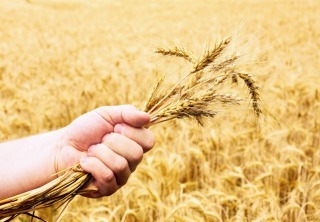 Wheat gets a bad rap in the alternative health sphere, receiving blame from all sides. Today, I’m here to provide the other side. Today, I’m going to give you seven solid reasons to love wheat, ranging from its effects on the environment, its role in the foundation of the American republic, its effect on gut bacteria and your health, its ability to stamp out hatred, its protective role in the lives of Bronze Age Chinese women, and its status as an enduring symbol of human rights and prosperity.
Wheat gets a bad rap in the alternative health sphere, receiving blame from all sides. Today, I’m here to provide the other side. Today, I’m going to give you seven solid reasons to love wheat, ranging from its effects on the environment, its role in the foundation of the American republic, its effect on gut bacteria and your health, its ability to stamp out hatred, its protective role in the lives of Bronze Age Chinese women, and its status as an enduring symbol of human rights and prosperity.
Let’s get right to it.
Wheat is a great source of glyphosate.
Just before harvest, many wheat farmers apply glyphosate, the primary ingredient in Monsanto’s blockbuster pesticide Roundup. It kills weeds and most importantly acts as a “harvest aid.” If you eat conventional wheat, you’re eating Roundup, too (PDF).
Some people call Roundup the safest pesticide around. I’ll go one further and say it’s the most beneficial pesticide. It targets so-called “good bacteria” via the shikimate pathway, which really only cocoon your gut from the harsh realities of the food we eat and render our immune systems completely reliant on their microbial machinations. It’s probably carcinogenic, which really means it’s exposing the weakened, senescent cells in your body beginning to revolt against the host.
A steady intake of Roundup-laden wheat is taking the red pill for your health: It reveals and amplifies the sorry state of your physiological state, and in doing so ultimately strengthens it.
Wheat saved Bronze Age Chinese women from cancer and heart disease.
From 5000 to 2900 BC, humans living in Central China subsisted primarily off domesticated pigs, millet, and hunted foods. Stable isotope analyses reveals that both men and women ate similar diets of roughly equal amounts of plant and animal food in this period. Shortly after the introduction of wheat, that changed. Men began deriving a larger share of their caloric intake from animal foods, while women ate fewer animals and far more wheat.
Sure, this may have given rise to a male-dominated social hierarchy that persists to this day, but at least women were getting all the heart healthy whole grains and insoluble fiber found in wheat, and none of the diabetes, cancer, heart disease, and unseemly vitality and physical robustness provided by meat.
Wheat provides necessary acceleration of environmental degradation to galvanize action.
Accelerationists claim that the only way to save the world from capitalism—a lamentable ideology that’s robbed billions of the dignity of abject poverty—is to accelerate its ascent and expand its reach until the failures and horror are laid bare. The monocropping of wheat plays a similar role in environmental accelerationism: It speeds up the demise of our environment, erodes our soil health, and destroys our ability to grow food.
Wheat agriculture itself has a large environmental footprint, causing huge levels of carbon emissions.
Wheat monocropping promotes topsoil degradation. Topsoil is the nutrient-dense portion of the soil where things grow. If we grow too much of the same thing in the same patch of soil without resting or replenishing it, that topsoil erodes. Without topsoil, we can’t grow anything.
Wheat fertilizers frequently run off into waterways, creating unsightly and even dangerous algal blooms and upsetting the balance of nutrients in our natural bodies of water.
Maybe when plants don’t grow anymore we’ll start composting, start rebuilding that topsoil back up. Maybe when the algal blooms stretch for thousands of miles and grow so thick and dense entire seasteading communities establish colonies on them, we’ll rein in the fertilizer overuse. Maybe wheat’s so bad for the environment that it’s good.
Wheat built the Pyramid.
Every civilization has its monuments, its grand, usually architectural homages to the transcendent. The Ottomans had the Blue Mosque. The Incans, Macchu Pichu. Egypt, its pyramids. Rhodes, its Colossus. But not America. The foundation of the American republic rests not on the Washington Monument, the Statue of Liberty, nor even the bloody grounds of Gettysburg. When migrants flocked to our shores, they came not for the enumerated freedoms, the economic opportunities. They came to be told exactly how many servings of grains, fruits, vegetables, meat, beans, nuts, dairy, and fats they should be eating. They came for the USDA Food Pyramid.
Without the Pyramid, we wouldn’t have known that meat, nuts, and legumes belong in the same category and possess interchangeable attributes.
Most importantly, without the Pyramid, we wouldn’t have known we’re supposed to eat between 6 and 11 servings of wheat.
Without wheat, the Pyramid crumbles. Without wheat, there is no America.
Wheat embraces diversity and openness.
There’s a lot of talk these days about the importance of cultural diversity and openness. There’s an almost equal amount of chatter about cultural homogeneity and closed borders. If you believe in the former set of values and reject the latter, you’d better eat some wheat. Why?
Wheat breaks down doors. It topples walls. It, with the help of gluten, initiates the production of zonulin—the molecular messenger which instructs our tight junctions to open and allow passage to all who enter. This may admit some unsavory characters and increase the risk of autoimmune disease, but it’s a small price to pay for enriching your body with the rich and diverse panoply of bacterial endotoxins, protein fragments, and foreign molecules.
Wheat prevents micronutrient overdoses.
Micronutrients can be helpful in certain contexts, but they’re easy to overdo. Too many of the foods we eat are too high in micronutrients. Modern wheat prevents micronutrient overdose by two primary routes.
First, modern wheat itself is lower in nutrient excess. The introduction of dwarf wheat coincided with a reduction in zinc, magnesium, iron, and copper to more moderate levels. Another study found that the “ancient” wheats—emmer, spelt, and einkorn—have higher concentrations of selenium than modern wheat. The moderate-nutrient content dwarf wheat also happens to be higher yield (more evolutionarily successful), so it’s able to outcompete those traditional wheats with excessive nutrient loads.
Second, wheat is high in phytic acid, an anti-nutrient that binds to minerals like calcium, iron, and zinc and prevents you from absorbing and utilizing them. Dwarf wheat is especially good here, as its phytate:mineral ratio is high.
Moderating one’s micronutrient intake is tricky. Wild animals don’t “count magnesium ions,” so why should you be expected to? And even if we do religiously track our vitamin and mineral intake, the references we use for nutrient information vary wildly in accuracy. There’s no way to really know for sure. Eating modern dwarf wheat is an easy, effortless way to ensure we’re not getting too many nutrients.
Wheat exposes the intolerant among us.
Intolerance is a social evil that deserves to be stamped out. But first, we must identify it.
Most food intolerance is silent and subtle. Carb-haters are particularly sneaky. The request to swap out hash browns for berries at the diner. The quick removal of the second corn tortilla at the street taco stand. Wheat’s power is such that the intolerant don’t even try to hide their hate. They blurt it out. Willingly. Why, I’ve overheard bigots so brazen that they openly request that their food be “gluten-free” when ordering in restaurants. They know people can hear them. They want people to hear them. They simply don’t care.
Almost every day, I hear from readers who experience real physical revulsion from wheat. They get headaches, diarrhea, even peripheral nerve pain and other physical symptoms from even incidental exposure to wheat and gluten. They call themselves “celiac,” or “gluten-sensitive,” or “gluten-intolerant,” but we know what they really are, even if we don’t want to admit it. After all, they’re our parents, teachers, colleagues. Maybe I don’t want to admit it because in accepting their patronage I’d be complicit in their hate.
If you don’t know how to incorporate wheat into your life, here are a few easy ideas:
A Ziploc bag full of pastry flour and a straw make a great snack on the go. Start slowly. Don’t inhale.
Morning porridge: whole wheat flour and water in 1:1 ratio, simmered over low heat for five minutes. Really filling.
Gluten balls: Mix a stiff dough, then knead it until it feels like an earlobe. Rest in a bowl of water for an hour. Rinse the earlobe under warm water, squeezing and kneading and later needing it. Once the water runs clear, not white, when you squeeze it, you’ve got pure gluten. Roll into balls and cook or eat directly. I like a little dusting of Roundup powder on mine.
I’m being totally, utterly serious here, folks. Wheat is the solution to, well, almost everything.
That’s it for today. Thanks for being part of the fun. What can I say? Some days I just have to let the sarcasm out to play…. For those interested in the real Primal take on wheat, check out a few of my past posts (1, 2, 3, 4, 5) on the topic. Take care, everybody.
The post 7 Reasons to Love Wheat appeared first on Mark's Daily Apple.



May 16, 2017
How to Build Strength and Muscle with Progressive Calisthenics
 Today’s guest post is offered up by some long-time friends of MDA, Al Kavadlo and Danny Kavadlo. I’m excited to share their expertise with the Primal community here. This year I wrote the foreword for their new book, Get Strong, which was just released.
Today’s guest post is offered up by some long-time friends of MDA, Al Kavadlo and Danny Kavadlo. I’m excited to share their expertise with the Primal community here. This year I wrote the foreword for their new book, Get Strong, which was just released.
If you’re into Primal living, chances are you’re a minimalist when it comes to exercise. In our busy world, we all want to make good use of the time we allot to our training. Additionally, we Primal devotees know that many of the fancy machines we may encounter at the local globo-gym are not needed for building real-world strength.
As Mark Sisson accurately says, you need to “lift heavy things” in order to get strong, but there is no need to overcomplicate the issue. Barbells, kettlebells and dumbbells are viable options, but you can keep it even simpler than that and still get very strong. Yes, you need to push your muscles with resistance training in order to affect growth in them, but your own body weight provides all the resistance you’ll ever need. You don’t have to rely on external weights in order to build strength and muscle. Calisthenics exercises generally require nothing more than the floor beneath your feet, a wall, a bench or a bar. Sometimes it seems too simple to be true, but I assure you that one can get extremely strong with nothing but bodyweight training.
Many believe that once you hit double-digit numbers on exercises like push-ups and pull-ups, an external load must be added in order to continue building strength and muscle. This is simply not true. If you know how to manipulate leverage, there is no need to ever add weights to your workouts. Once you understand the underlying principles behind progressive calisthenics, you can build a lifetime of strength with nothing more than your own body weight.
Here are three simple ways you can vary the intensity of any calisthenics exercise without adding weight or requiring the use of a gym.
1. Change the Weight-to-Limb Ratio
By adjusting the distribution of your bodyweight, you can increase or decrease the resistance on many calisthenics exercises. To illustrate this, compare a push-up with your feet on an elevated surface to a push-up with all your limbs on the ground. Due to the change in leverage, there is much more weight in the chest, arms and shoulders in the former than in the latter, rendering it more difficult. Conversely, a push-up with the hands elevated (instead of the feet) will place less demand on the muscles of the upper body, making the exercise better suited to beginners.

Furthermore, you can take this principle to the next level when you remove a contact point entirely: A one-legged squat will always require more strength than a squat performed on both legs. By completely eliminating one point of contact, you’ve doubled the weight loaded onto the individual leg. Fortunately, there are many steps in between the two, such as split squats and other asymmetrical squat variations.
2. Alter the Range of Motion
Another way to progress bodyweight exercises is to alter the range of motion. One example of this is to progress from a hanging leg raise where your legs end up parallel to the ground, to a hanging leg raise where your toes go all the way to the bar. The increased distance makes it harder.
Additionally, you can regress a movement pattern by using only part of the standard range of motion. For example, practicing the negative phase of a pull-up as a progression toward full pull-ups, or doing half-squats until you are able to perform the entire range of motion.
3. Give Yourself an Assist
There are several ways that you can use the principle of self-assistance as a gateway toward more advanced bodyweight exercises. In the case of the one-legged squat, this is often done by sitting back onto a bench, as doing so provides balance and stability in the bottom position, which is one of the most difficult aspects of the exercise.

A self-assist can also be provided from the legs when working certain upper-body movements. If you aren’t strong enough to do a pull-up yet, you can keep one foot on a chair or platform to assist your arms. Put as much of your weight as possible in your arms and use your foot to make up the difference.
Here are a few additional exercises that employ these three principles, which you can begin implementing in your training today—if you’re ready for them!
1. Drinking Bird

This is like a straight-leg deadlift performed on only one leg. It’s a great example of altering the weight-to-limb ratio by removing a contact point. Like the single-leg squat, taking one of your legs out of the equation doubles the amount of work performed on the primary leg. Furthermore, a major balance and stability component is added to what would otherwise be only a pure strength exercise. That’s why the drinking bird is surprisingly difficult even with just your bodyweight.
Begin by standing on one foot with your opposite leg hovering just above the ground behind you. From here, lean your upper body forward, bending from your hips and reaching your opposite leg out behind your body. This will not only help you balance, it will also further engage your lower back as well as the leg that’s in the air.
Watch out that you don’t bend your spine on the way down, but rather take the stretch in your hamstrings. The idea is to keep your back flat and pivot from the hips.
2. Archer Push-up

This advanced push-up variation is an excellent example of how you can change the weight-to-limb ratio in order to progress an exercise. Begin in a push-up position with a very wide hand placement. From there, keep one arm straight while you bend the other, so your body slides toward the side of the arm that bends. Most of your weight will wind up in the bent arm, making the move substantially harder than a standard push-up.
If you’re unable to perform a full archer push-up, you can start with your hands a bit closer and allow your straight arm to have a small bend in the elbow in order to make the move more manageable. In time, aim to eliminate that bend. Play around with gradually moving your arms farther out to allow for a full range of motion.
The archer push-up is also an example of a self-assist, as it can be used as a progression toward a one-arm push-up. In this case, you can think of it as a regressed one-arm push-up with the secondary arm acting as a kickstand to help provide stability to the rest of the body.
3. Muscle-up

The muscle-up begins like a pull-up, but keeps going until your entire torso winds up above the bar. Grip the bar slightly narrower than you would for a pull-up, then lean back and pull the bar down your body as low as possible. At the top of your pull, reach your chest over the bar and extend your arms.
Though you can think of the muscle-up like a pull-up with a much bigger range of motion, the two movement patterns are subtly different. When you do a muscle-up, you’ll be driving your elbows behind your body, rather than toward your sides as you would in a standard pull-up. This is why a narrower grip tends to work better for the muscle-up. It’s also helpful to think about leaning away from the bar during the pulling phase before pitching forward at the top. This creates a movement pattern that’s more of an “S” shape than a straight line, allowing you to better maneuver your body around the bar. When starting out, we encourage you to use momentum and be explosive. It may take a lot of practice to get a feel for the timing, though if you are solid on your pull-ups, and diligent in your pursuit, the muscle-up will eventually be yours.
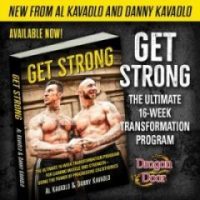 For more information on building strength and muscle with bodyweight training, pick up a copy of Al and Danny Kavadlo’s newly released book, Get Strong.
For more information on building strength and muscle with bodyweight training, pick up a copy of Al and Danny Kavadlo’s newly released book, Get Strong.
I want to thank Al and Danny Kavadlo for their guest post and the great suggestions today. And thanks to everyone for stopping by the blog. Have questions or thoughts on using progressive calisthenics for your Primal fitness routine? Share them on the comment board. Have a great week.
The post How to Build Strength and Muscle with Progressive Calisthenics appeared first on Mark's Daily Apple.



May 15, 2017
Dear Mark: Erythritol and Weight Gain, Chicken Liver and Arsenic, and Tips for Laptops in the Sun
 For today’s edition of Dear Mark, I’m answering three questions from readers. First, is erythritol, one of the more common sugar alcohols, linked to weight gain? According to a new study, it is. What should we make of the research? Next, I talk a good game about chicken livers, but there’s a new study that seems to show they’re big repositories of arsenic. Should you stop eating chicken liver? And finally, I give a few tips for improving screen clarity when working outside on your laptop in full sun.
For today’s edition of Dear Mark, I’m answering three questions from readers. First, is erythritol, one of the more common sugar alcohols, linked to weight gain? According to a new study, it is. What should we make of the research? Next, I talk a good game about chicken livers, but there’s a new study that seems to show they’re big repositories of arsenic. Should you stop eating chicken liver? And finally, I give a few tips for improving screen clarity when working outside on your laptop in full sun.
Let’s go:
Mark, what’s your take on this new report that erythritol is associated with weight gain? I’ve been eating chocolate sweetened with it but am unsure I should keep eating…
It’s a confusing report that gives the impression the more erythritol a person eats, the more weight they gain. They refer to erythritol as a “common sweetener” used by people trying to lose weight. “may actually have the opposite effect.” They discuss how it’s naturally found in fruits like watermelon and pears, and is added to stevia in the product Truvia. All in all, the implication is that using erythritol “may actually have the opposite effect”—it might make you gain weight.
But then the real story comes out: Erythritol is just a biomarker associated with weight gain.
Okay, so maybe high erythritol levels indicate an increased intake of diet foods, and these are just people trying and failing to lose weight. Then you look at the actual paper, and you realize that the authors have identified a previously-unknown pathway for endogenous synthesis of erythritol in humans. This is truly landmark. The prior consensus was that humans don’t make erythritol in the body.
Well, the pathway they identified is a glucose-to-erythritol conversion. That’s all we know. The people who gained the most weight were converting glucose to erythritol more than anyone else.
My guess—and it’s just that, a guess—is that these people were also eating the most glucose. I mean, glucose consumption is a fairly well-established risk factor for weight gain in the average sedentary human. It wouldn’t surprise me if college freshman who ate the most glucose also gained the most weight. It’s not like college freshman don’t gain weight. Most do, and those who do gain almost 8 pounds.
Another piece of evidence in favor of carbs and carb intolerance being the issue is that the students with the highest erythritol levels also had higher blood glucose levels at the start of the study.
I just saw this study about arsenic in chicken livers. Since you seem to be a big fan of chicken liver, I thought I’d ask your opinion. Should we stop eating them?
Great question. Thanks.
Yes, I am a fan of chicken liver. They’re mild (especially the pastured ones). They’re lower in vitamin A than ruminant liver, so you can eat them more often without overdoing it. They’re higher in iron, if that’s a problem for you. They’re also a rich source of folate, perhaps the richest. Chicken liver is a good introductory organ meat.
I am not a fan of arsenic.
The arsenic in these chicken livers was actually an arsenic metabolite—something that the body converts arsenic into. They were getting it from an infamous growth promoter called 3-nitro-4-hydroxyphenylarsonic acid, or roxarsone, which is an organoarsenic compound. The chicken eats roxarsone, it gains weight more efficiently, but it also produces a ton of arsenic metabolites and lodges them in its liver.
I have good news for people who eat chicken raised in the European Union (as of 1999) or North America (as of 2013): chickens raised in those countries aren’t allowed to eat roxarsone. The chicken livers in the study came from chickens raised in China, where roxarsone is still used. Good quality pastured chicken from the EU or NA should be completely safe.
The Wiley press release about the study has a hilarious title, by the way: “Poultry Feed with Arsenic More Problematic Than Assumed?”
I’d say so, yeah.
Anyone have solutions for laptop work outside? I’d love to work outside more, but the sunlight makes screens impossible to read.
Make shade. A beach umbrella is an easy option. Or even a regular rain umbrella held up between a couple rocks, positioned just so. Costco sells a good pop-up tent for a reasonable price, although you couldn’t stand and work under it. There’s also the laptop hood.
Find shade. I do most of my outside work under cover. Usually in my backyard with a canopy, but occasionally out in a park or forest under trees. For one it keeps the heat off you and your computer, thus extending the time you can spend working. If you’ve got any kind of tree cover nearby, go for that. You might have to drive an extra 10-15 minutes to get there, but that’s a small price to pay for the comfort and stimulation of working outside with perfect clarity.
Use an anti-glare screen protector. There are several available on Amazon. Read the reviews, as they seem mixed.
Invert colors. If you’re working only with text, inverting the colors—white text on black background—can help you see more clearly in sunlight. This obviously won’t work for graphic designers or anyone requiring full visual fidelity.
Increase contrast. Increasing the contrast on your monitor can also improve clarity in full sun.
Become one with your laptop. Eventually, we’ll all enjoy (or “enjoy”) direct neural links to our devices without physical interaction. We’ll “type” emails or “write” code without lifting a finger. A thought is all we’ll need. Everything will take place in our heads and, maybe, behind our eyes. Hell, if they can connect directly to our visual cortex, maybe our eyes will become vestigial organs. One can only hope!
Until that day comes, you can wear the laptop compubody sock. Just try not to do so within 500 meters of a school.
For anyone intrigued by outdoor laptop work but unsure of the benefits, check out this older post I wrote on the topic. Long story short is that it’s really, really beneficial for you. I may write more on this in the future.
That’s it for this week, folks. Thanks for reading, and I’d love to hear your take on the questions and answers in today’s Dear Mark. Take care!
The post Dear Mark: Erythritol and Weight Gain, Chicken Liver and Arsenic, and Tips for Laptops in the Sun appeared first on Mark's Daily Apple.



May 14, 2017
Weekend Link Love – Edition 452
 RESEARCH OF THE WEEK
RESEARCH OF THE WEEKIf you believe organic or local foods taste better, they will.
Exercise reduces aging at the cellular level.
Coffee and wine appear to be good for gut biome diversity.
Meniscus surgery increases the risk of knee replacement.
Compared to a high-fiber diet, a MUFA-rich diet reduced liver fat and increased liver insulin sensitivity.
Noisy knees could presage arthritis.
Low dose cannabis reverses brain aging in mice.
Forcing attendance harms the students it most purports to help (PDF).
Relationships between disease, mortality, and protein source.
NEW PRIMAL BLUEPRINT PODCASTS

Episode 168: Devyn Sisson: Host Elle Russ chats with my daughter, Devyn, about the launch of her new book.
Each week, select Mark’s Daily Apple blog posts are prepared as Primal Blueprint Podcasts. Need to catch up on reading, but don’t have the time? Prefer to listen to articles while on the go? Check out the new blog post podcasts below, and subscribe to the Primal Blueprint Podcast here so you never miss an episode.
Oral Health: What You Eat (and Don’t Eat) Counts
Popular Blood Tests—the Facts, Ranges, and Alternatives You Should Know
The Language of Microbial Culture: Explaining Prebiotics, Probiotics, Synbiotics, and Postbiotics
How to Move Through Life With an Edge
INTERESTING BLOG POSTS
How a “dash of autism” may have helped spur human evolution.
Why you should eat glutathione.
MEDIA, SCHMEDIA
Extreme sports enthusiasts aren’t actually thrill-seeking adrenaline junkies looking for the the next hit. Their primary motivation is to feel closer to nature, more self-aware, at peace and even transcendent. They’re chasing—and in many respects attaining—meaning.
Those millennials sure are annoying, but man are they improving the food industry.
France bans extremely skinny models.
You’ll never guess what happened when this writer tried to debunk the benefits of ice baths by trying them.
EVERYTHING ELSE
Inside the movement to make cities and suburbs more walkable.
The Incan corded writing system is just fascinating.
Just what we need: a new tick-borne disease that’s worse than lyme.
Cows are using glucose monitors.
THINGS I’M UP TO AND INTERESTED IN
Interesting article I’m pondering: The invention of happiness.
Now I’ll have to revise the Primal food pyramid: Boogers are good for your health.
Neanderthal depiction I liked (and found quite unique): This one.
I suppose it’s only fair: Deer eats human.
I was inspired: Wow.
RECIPE CORNER
I’m rarely impressed with turkey burgers, but these green chili turkey burgers are amazing.
There is nothing wrong and a whole lot right with these oven-baked ribs.
TIME CAPSULE
One year ago (May 14– May 20)
6 Reasons to Look Forward to Growing Old – It’s pretty good over here.
12 Essential Tips for Primal Women – In which I mansplain.
COMMENT OF THE WEEK
“My grandfather ate Crisco sandwiches for lunch as a kid:/ Crisco was invented in 1911. Sugar was a big issue too, Coke, Pepsi have been around forever. Not to mention she and others had plenty of time to consume bad foods through the 50’s (Cheese Whiz invented) 60’s (Lay’s chips founded) , 70’s (when high fructose corn syrup was marketed for consumers) and beyond. We didn’t invent the ‘baddies,’ we just perfected them.”
– Good perspective, TBar….
Happy Mother’s Day, everybody!

The post Weekend Link Love – Edition 452 appeared first on Mark's Daily Apple.



May 13, 2017
Sardine Nicoise Salad
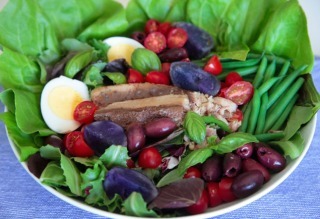 Salade nicoise might just be the original “Big Ass Salad”. A French classic, Salade nicoise is a rainbow of ingredients arranged on top of lettuce: green beans, purple potatoes, hardboiled eggs, tomatoes, olives, fresh herbs and, usually, tuna. This recipe follows the French preparation pretty closely—with once exception. Instead of opening a can of tuna, try sardines instead.
Salade nicoise might just be the original “Big Ass Salad”. A French classic, Salade nicoise is a rainbow of ingredients arranged on top of lettuce: green beans, purple potatoes, hardboiled eggs, tomatoes, olives, fresh herbs and, usually, tuna. This recipe follows the French preparation pretty closely—with once exception. Instead of opening a can of tuna, try sardines instead.
Although there’s nothing wrong with using tuna for this salad, it’s a good idea to balance your protein intake from different sources. What do sardines have to offer? Sardines are largely free of the heavy metals other, larger fish tend to accumulate (like tuna). They provide ample calcium, iron, protein, selenium, magnesium and omega-3s.
Canned sardines packed in olive oil generally tend to have better flavor and texture than water packed sardines, but it depends on the brand. Ideally, buy sardines with bones and skin included.
Once all the toppings are prepped for this salad, they’ll stay fresh for several days. Store the prepped toppings (green beans, potatoes, tomatoes, hard-boiled eggs, olives) in a large Tupperware container in the refrigerator. Right before eating, scatter some of the toppings over a big bowl of greens, open a can a sardines, and dig in.
Time in the Kitchen: 30 minutes
Servings: 4
Ingredients

6 ounces haricot verts (thin French green beans) (170 g)
6 small purple potatoes
2 hard-boiled eggs, sliced or quartered
1/2 cup (3 oz) pitted nicoise olives (or kalamata) (85 g)
8 ounces (about 1 cup) cherry tomatoes, halved (227 g)
8 ounces sardines (227 g)
1 shallot, finely chopped
1 clove garlic, finely chopped
2 teaspoons Dijon mustard (10 ml)
¼ teaspoon kosher salt (1.2 ml)
2 tablespoons red wine vinegar (30 ml)
1/2 cup extra virgin olive oil (120 ml)
1 small head butter lettuce, plus a few handfuls of mixed salad greens
Fresh herbs for garnish (basil, oregano or parsley)
Instructions

Fill a medium-sized pot halfway with water. Bring to a boil and add green beans. Cook just 2 minutes. Pull the bean out with tongs and plunge into a bowl filled with ice water. When the beans are cool, remove from the ice water and pat dry. For easier eating, cut the beans in half.
Put the whole potatoes in the same pot of water that you cooked the beans in. Add enough salt to make the water very salty. Bring the water to a gentle simmer. Cook at a gentle simmer until the potatoes are easily pierced with a fork, about 15 minutes. Set the potatoes aside to cool, then slice or quarter.
Whisk together the shallot, garlic, mustard, salt, red wine vinegar and olive oil.
Right before eating, toss salad greens with the toppings: green beans, potatoes, hard-boiled eggs, olives, and tomatoes. Add sardines, and salad dressing. Scatter fresh herbs of your choice on top of the salad before eating.
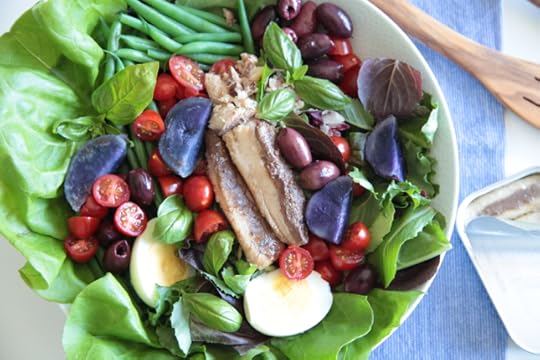
The post Sardine Nicoise Salad appeared first on Mark's Daily Apple.



Mark Sisson's Blog
- Mark Sisson's profile
- 199 followers







